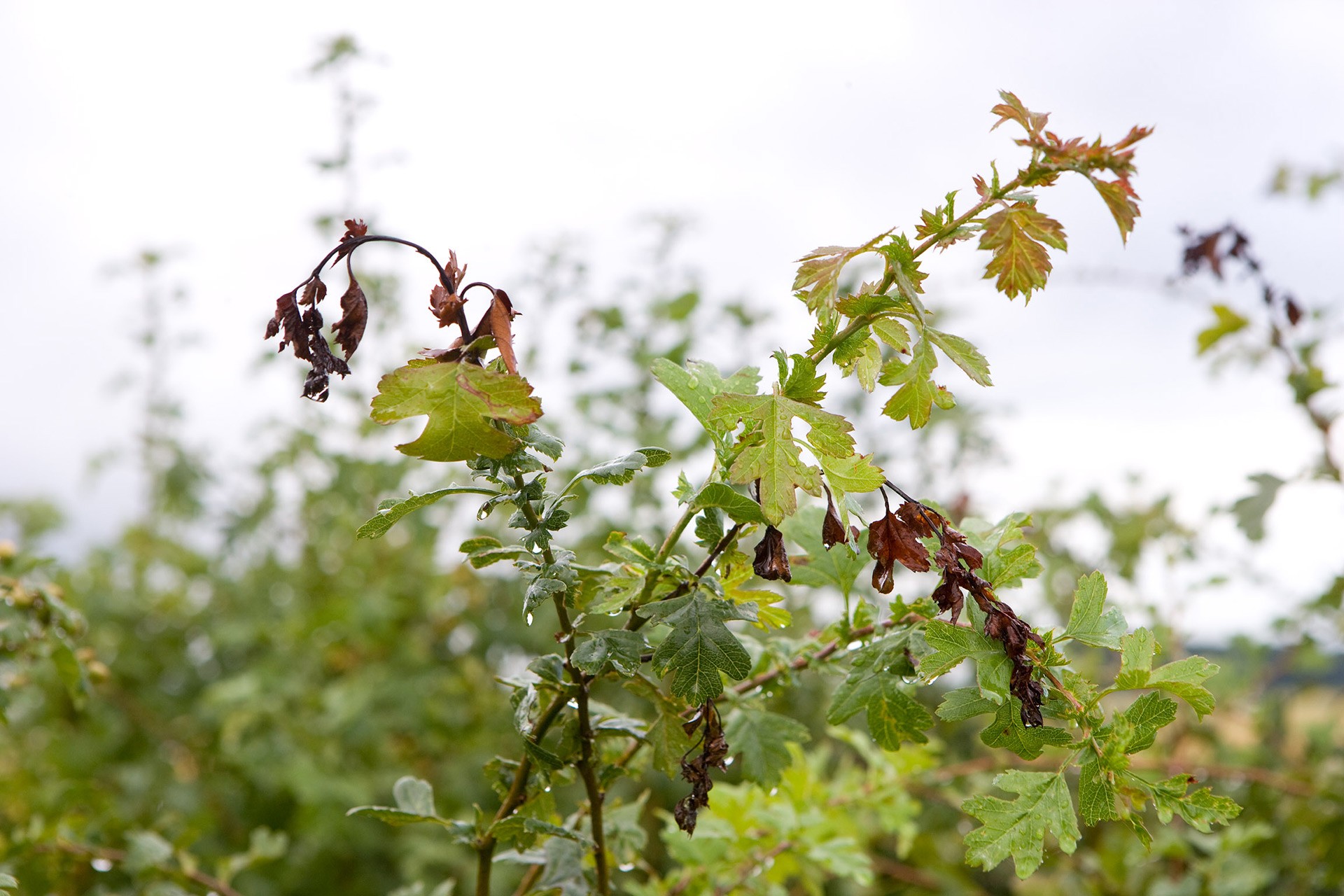Fire Blight checks commence
Publicationdate: 1 juli 2024
Naktuinbouw has started inspections in so-called buffer zones for fire blight in the Netherlands. You may encounter inspectors at nurseries, in green spaces and in fruit growing plots.

Buffer zones
The Netherlands has ten buffer zones within which Naktuinbouw checks for fire blight. Setting up these buffer zones and carrying out intensive inspections works excellently to prevent the spread of fire blight within Europe and to increase sales opportunities for companies.
In the Netherlands, it has been legally established since 1983 that the spread of fire blight (Erwinia amylovora) in certain areas, the so-called buffer zones, must be prevented. This is regulated in the 'Plant Health Regulations'. The areas are also determined here, but you can also view these in the NVWA web viewer.
Spread of Fire Blight
Fire blight can infect products on nurseries and limit marketability due to the quarantine status, causing major economic damage. The introduction of the buffer zones has been successful. Since the buffer zones were established, the number of attacks in these buffer zones has fallen from approximately one thousand to approximately one hundred and fifty attacks per year.
Special status
By establishing the buffer zones, host plants that are commercially grown in this area can be given special status (PZ-ERWIAM). Dutch companies with host plants with this special status are allowed to trade them to areas within Europe that are officially free of Fire Blight. These are protected areas, or 'Zone Protecta'.
Checks
The inspections take place every year from June to October. During the same period, the nurseries are also intensively checked twice. In addition, a latent test is carried out for the possible presence of fire blight. Within the buffer zone, the planting of a number of plants susceptible to blight - such as the wild hawthorn (Crataegus) - is prohibited.
Tree nurseries and fruit growers have a great interest in destroying and removing infected plants to prevent damage to production plots. The costs of the checks in the buffer zones are therefore borne by the participating companies. Participation is completely voluntary, but without participation it is not possible to obtain the PZ-ERWIAM status.
Positive experiences
The experiences with these checks are positive. Not only because of the planting ban, but mainly as a result of the intensive inspections and compliance with the imposed measures in the buffer zones. This year, one buffer zone has been adjusted at the request of the tree nursery sector. The change has been announced in the 'Staatscourant' (in Dutch): Inspections are carried out on behalf of the Tree Nursery Council and on the basis of the instructions of the NVWA.
Participate
Do you grow tree nursery crops in one of the buffer zones? And are you also interested in having your products eligible for PZ-ERWIAM status? Please send us an email so we can give you more information.
